- Honda Worldwide Home
- Motor Sports
- EWC
- The History of Invincible Honda
- 1976
Honda Endurance Racing and F.C.C. TSR Honda are participating in the 2016/2017 FIM Endurance World Championship (EWC) series with Honda CBR1000RR bikes. The series stages a total of 6 races, ending with the Suzuka 8hours FIM EWC. The European Endurance Championship series is the predecessor to the FIM EWC series. In the 1970’s, Honda won both the riders and the constructors titles for four consecutive years. The team was so strong, it was known as “the invincible.”
 RCB Stronger with Every Race, Wins Title in Debut Season
RCB Stronger with Every Race, Wins Title in Debut Season
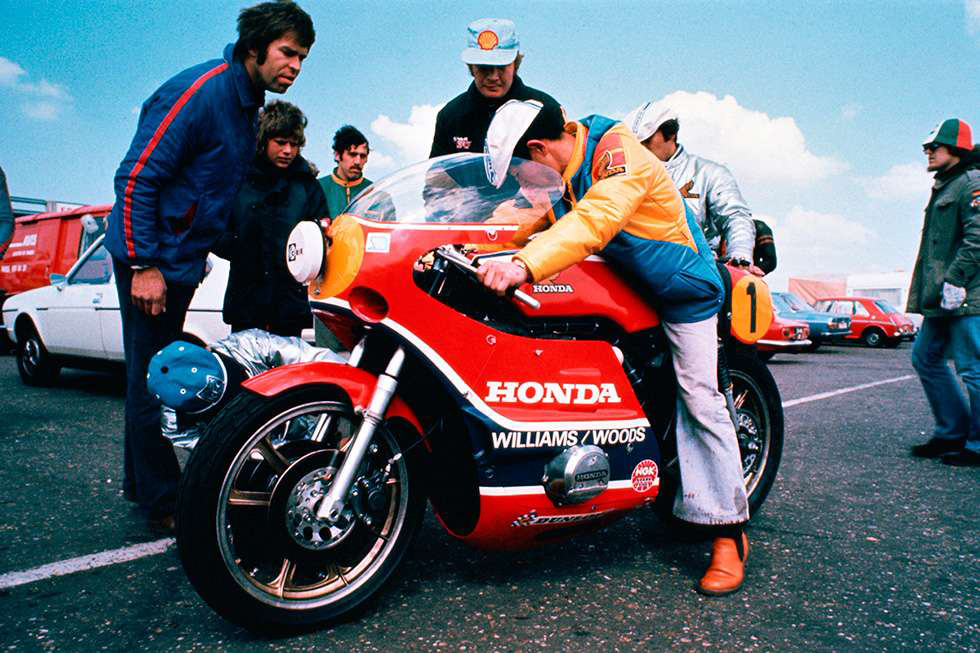
1976 Zandvoort 600km
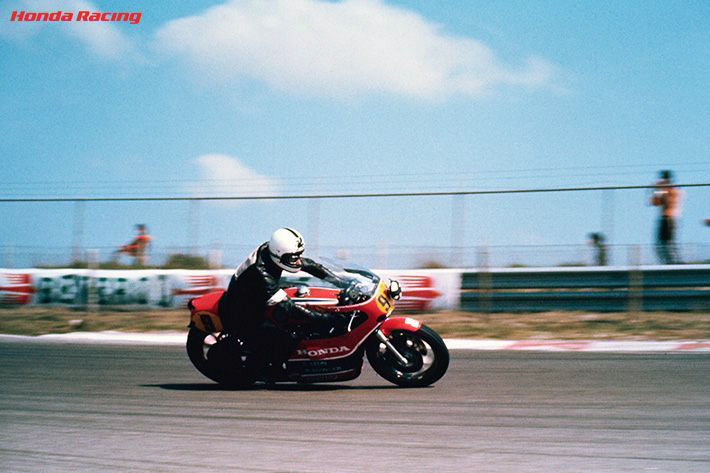
Roger Bowler (1976 Zandvoort 600km)
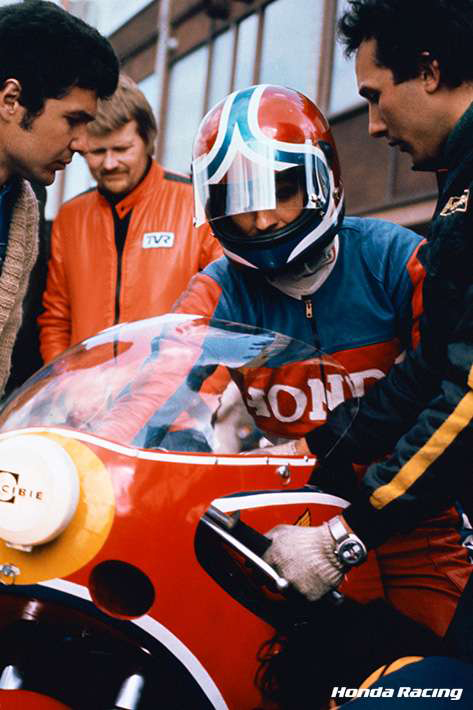
Christian Leon (1976 Zandvoort 600km)
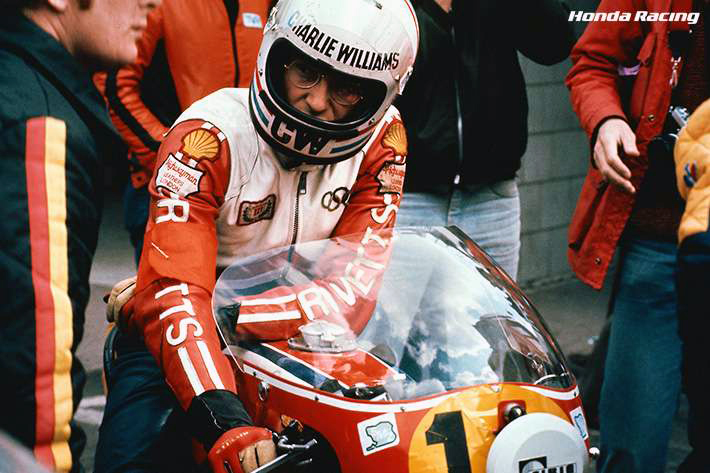
Stan Woods (1976 Zandvoort 600km)
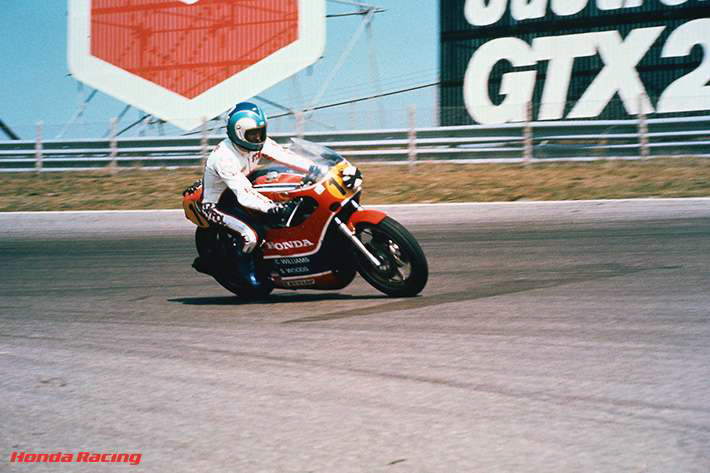
Charlie Willams (1976 Zandvoort 600km)
The unique (and rapidly developed) RCB1000 racers were rented out, one to each of its local affiliate teams, Honda France and Honda U.K. The teams immediately started testing the new machines, but soon had wheel damper problems, with all of the bolts breaking off. The team in Japan hurriedly designed new bolts with a larger diameter, but the plane carrying these components was held up in Anchorage due to mechanical issues. Luckily, the new parts arrived by the day of the race, but this meant that hardly any testing had been done and spare parts were limited. If anything went wrong, the team would have to cope with limited resources. The French team faced further problems, with one of their riders, Chemarin, could not race due to injury. Roger Bowler took his place and paired up with Christian Leon. Honda Britain team’s riders were Stan Woods and Charlie Williams.
The Zandvoort 600km race took place on the April 25 under unusually cold spring weather. On Lap 4, Honda France took the lead. On the following lap, Honda Britain moved up to second place. From then on, the Honda teams maintained their positions until Lap 110, when Honda Britain team pitted due to brake issues. Honda Britain decided to retire at this point, but Honda France led the race to the end, completing 142 laps in 4 hours 29 minutes 59 seconds. Honda France was two laps ahead of its closest competitor. The RCB had made a successful debut in endurance racing. At this time, both of RCB1000s were equipped with 915.2cc engines.
Despite this achievement, Director Aika was more relieved that the RCB1000s had safely completed the race than feeling pleased about the victory. There were numerous problems still to be solved before being ready to race, such as brake performance, lack of lean angle, unpredictable gearbox, unreliable electrics and unstable rear suspension. The rear wheel damper bolts had been a problem from an early stages and continued to occur in the practice sessions at Zandvoort. Strong engine-braking produced from the high-powered engine was too much for the bolts.
Under these circumstances, the non-championship Zandvoort 600km race was more of a test than an actual race. The teams knew that they could retire at any time, so the result was pleasing, but also a surprise. When disassembling the engine after the race, although the 115PS/9500rpm engine had brought victory, most of the components such as pistons, clutch and gearbox had suffered. As the teams were still not assured of the the RCB1000’s reliability, they had advised their riders not to push to the limit for their own safety. Nevertheless, the engine had suffered serious damages. From here on the RCB1000 series would face the dilemma of balancing between power with reliability throughout all of its iterations.
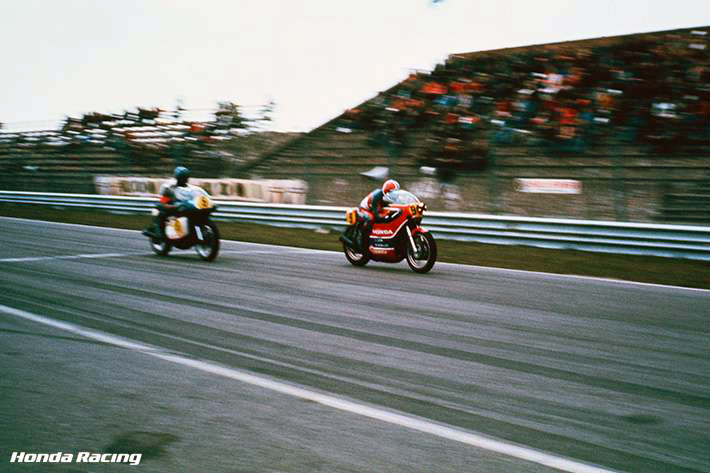
Christian Leon (right) (1976 Zandvoort 600km)
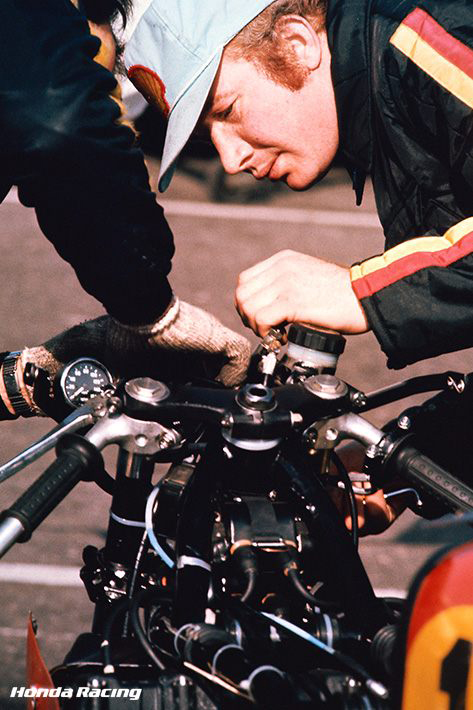
1976 Zandvoort 600km
Another weak point was that the engine’s overall size was the same as the CB750 FOUR’s, but its capacity was over 900cc. The pistons were closer to each other and the aluminum cylinders and the engine block were under a huge amount of strain. This meant that if the mechanic tightened the stud bolts holding the cylinder head and cylinder block to the case too tight, the cylinder block could be squeezed out of shape. The torque when assembling this engine, therefore, had to be particularly precise.
Just before the Zandvoort 600km, the third batch of RCB1000s was completed in Japan. These machines had changes such as double cam chains, additional cam gear dampers, a stronger clutch, an additional oil cooler and carburetors with power jets. Four weeks from their first victory in Zandvoort, Honda challenged the Le Mans 1000km (France) with four RCB1000s. Two were from the third, and two were from the second batches (941.3cc 118PS). In their first race to reach almost 8 hours, the RCB repeatedly showed its weakness and was defeated by its rivals.
During the Le Mans 1000km, the RCB suffered from breaking chains and gearbox problems. Two of the four machines retired with gearbox issues, and one retired from broken wheel damper bolts. The last machine led the race at one stage, but also had problems with the gearbox and finished the race in 4th place. The more powerful the engine became, the strength of the parts originally designed for a 750cc engine became a problem, as Aika had predicted. Other than these problems, two of the machines' drive chains also broke. This was an obvious sign that the performance of the machine was far beyond the strength of its components. From this race on, the team decided to change the drive chain every six hours.

